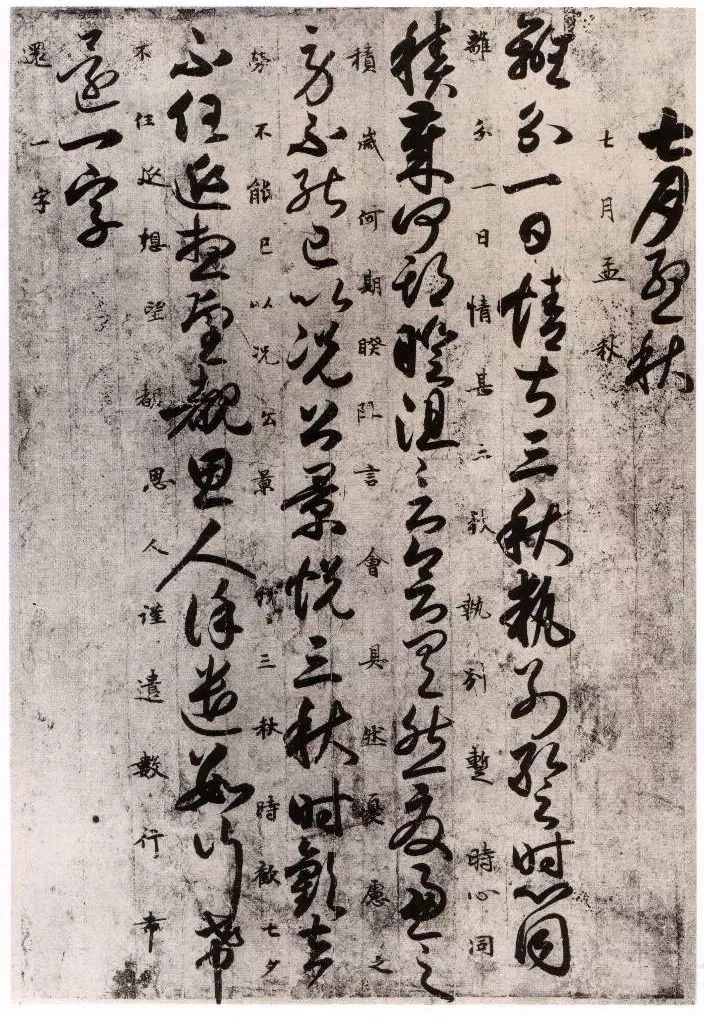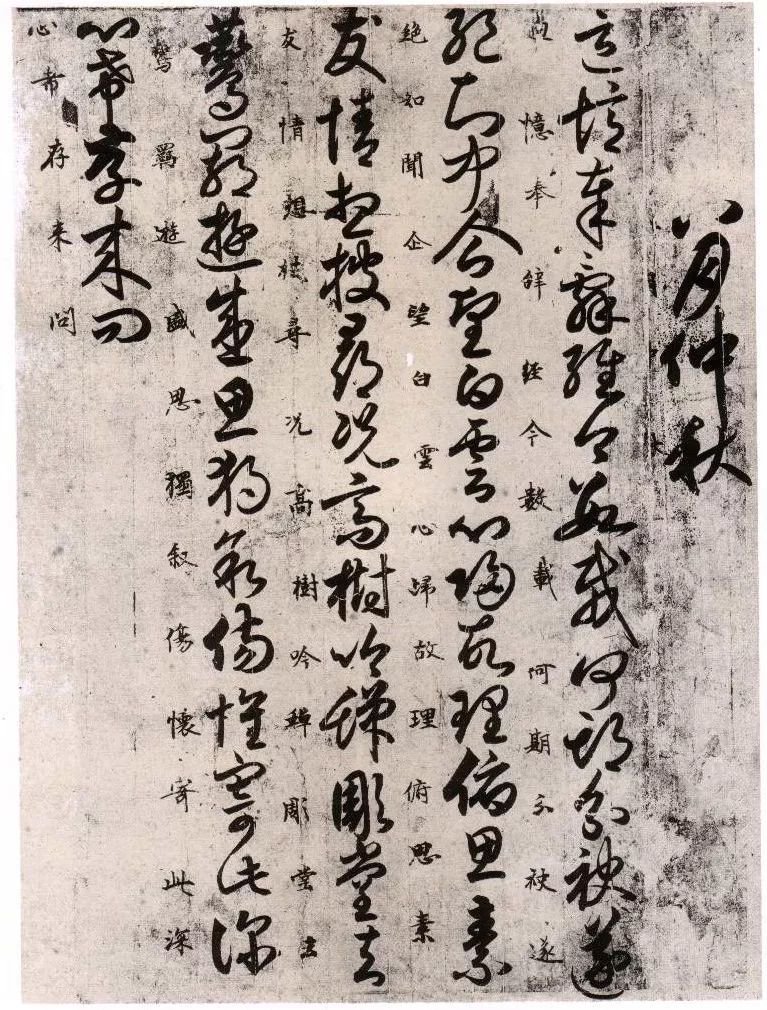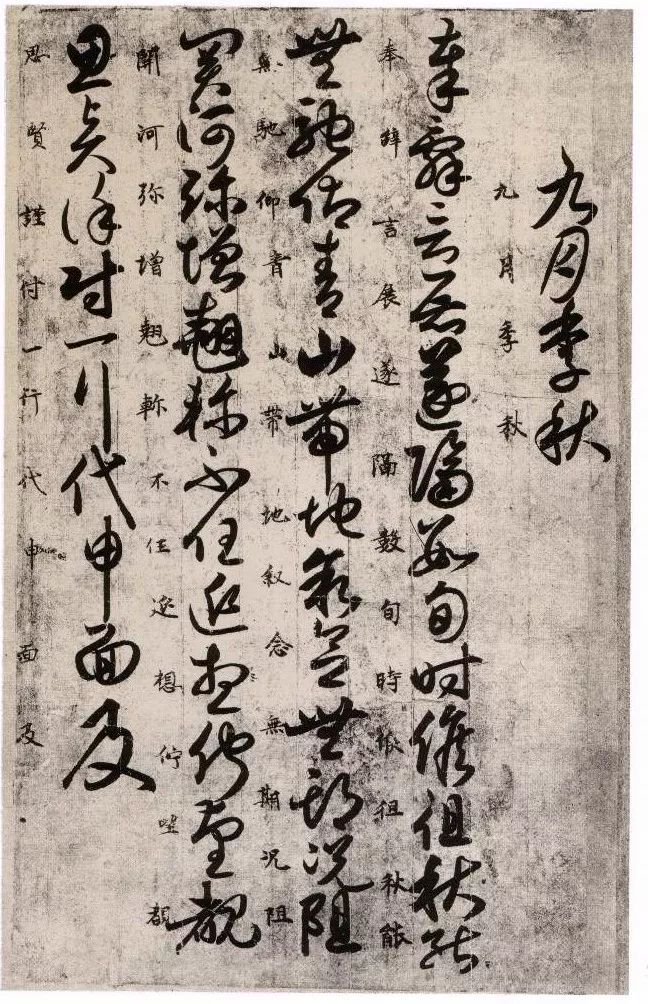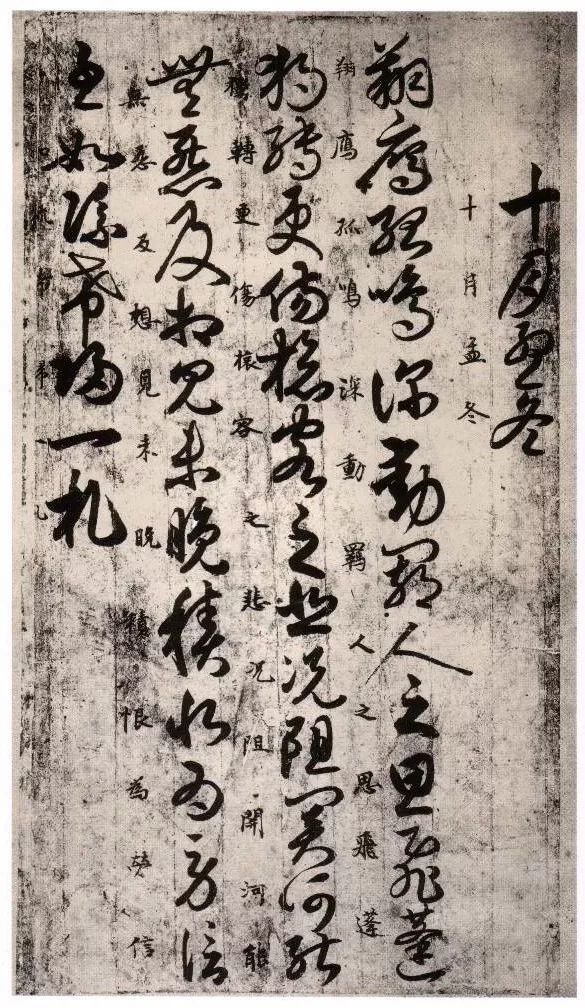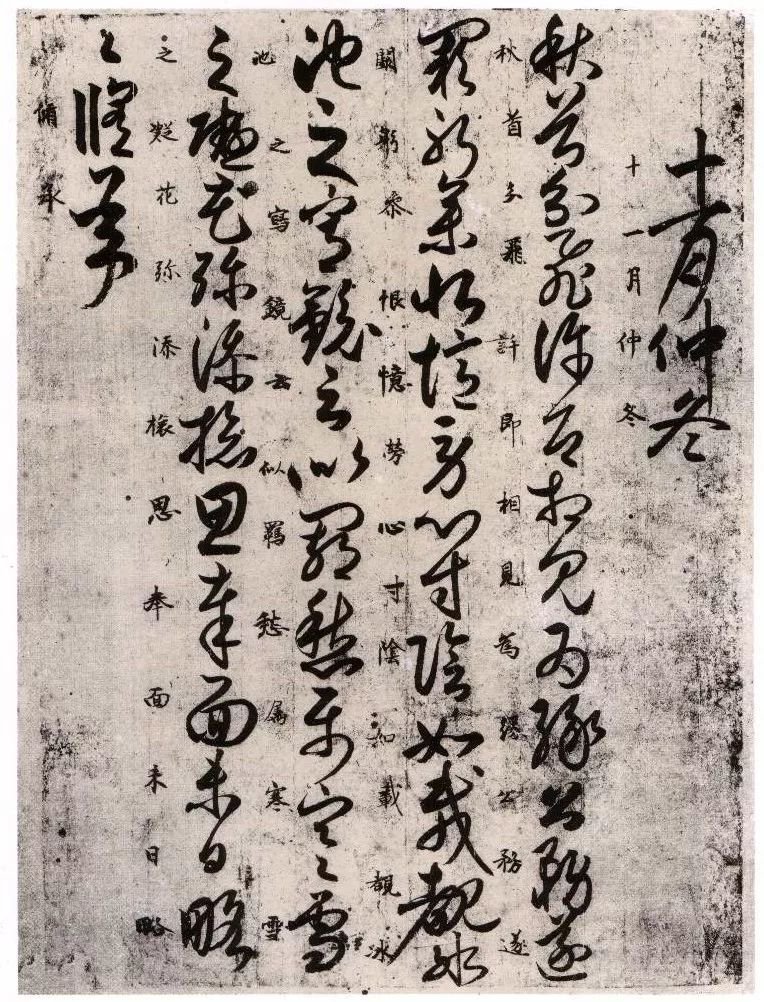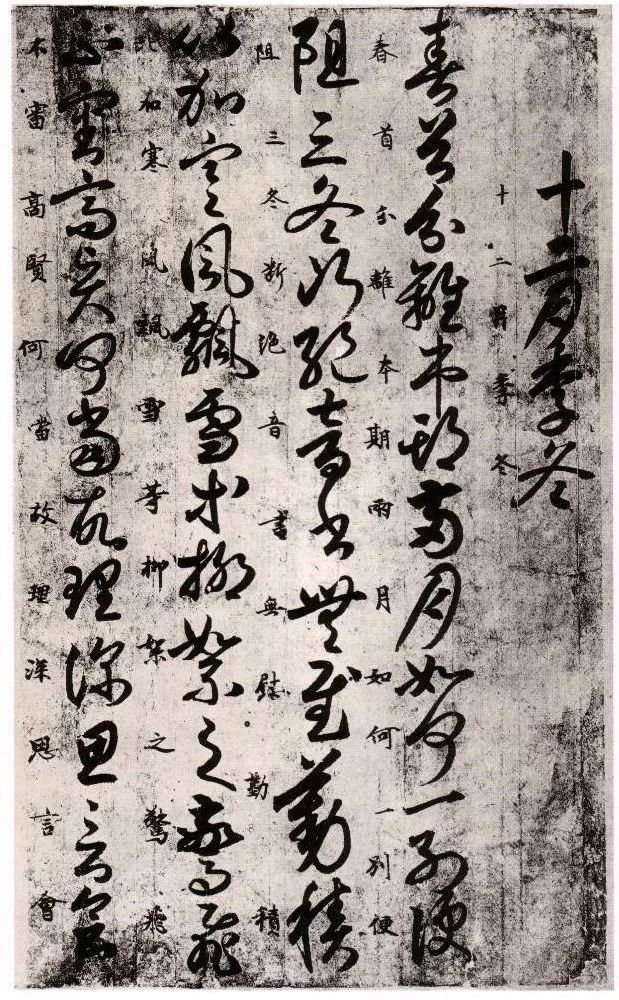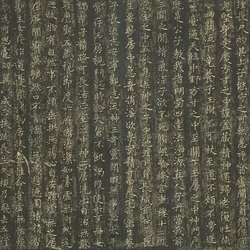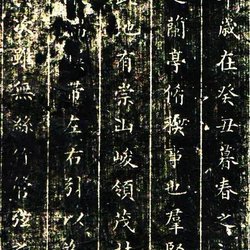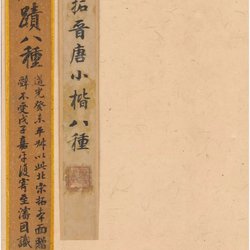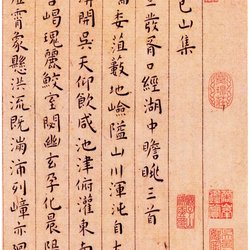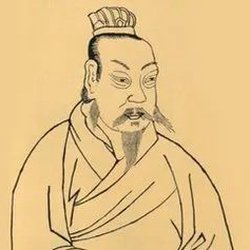"Yueyi Tie of the Tang Dynasty", ink ink on jute paper, no inscription, passed down from the Tang Dynasty, also known as "Twentieth Month Friends and Friends of the Tang Dynasty". There are appraisal seals such as "Yufu Baohua", "Inner Palace Treasures", "Secrets among the Groups of Jade", "Mingchang Yulan", "Wang's Yuqing", "Shiqu Baoji", "Jiaqing Yulan's Treasure" and so on. The post was followed by postscripts by Ming Jie Jin, Wang Wenzhi of the Qing Dynasty and others. It was once collected by the Imperial Household of Jin Mingchang, Song Dynasty and Biyuan, Qianlong, Jiaqing and Xuantong dynasties of the Qing Dynasty. The original is now in the Taipei National Palace Museum. It is recorded in "Shiqu Baoji·Third Edition".
The post is written in cursive script, and the explanation is in small regular script. There are fifty-three lines of cursive script, 541 words, and fifty-four lines of explanation in small regular script, 544 words. The posts were divided into twelve monthly orders and were made into ruler slips, which were called "monthly posts" by the ancients. This post is different from Jin Suojing's "Yueyi Post". There are three missing songs for the first month, February and May. His cursive writing style is round, vigorous and easy to control, which has won the charm of Jin people and is quite similar to Sun Guoting's cursive writing style. There are regular script explanations next to the cursive script. Although the characters are small, they change rapidly and are unpredictable. It is difficult for anyone after the Song Dynasty to match them. It is clear that Jin's postscript was written by a Tang Dynasty person, and the postscript states that this volume "is written with exquisite writing skills from ancient times, with insight into the wonders of the world, and the explanations in the middle are also scattered."
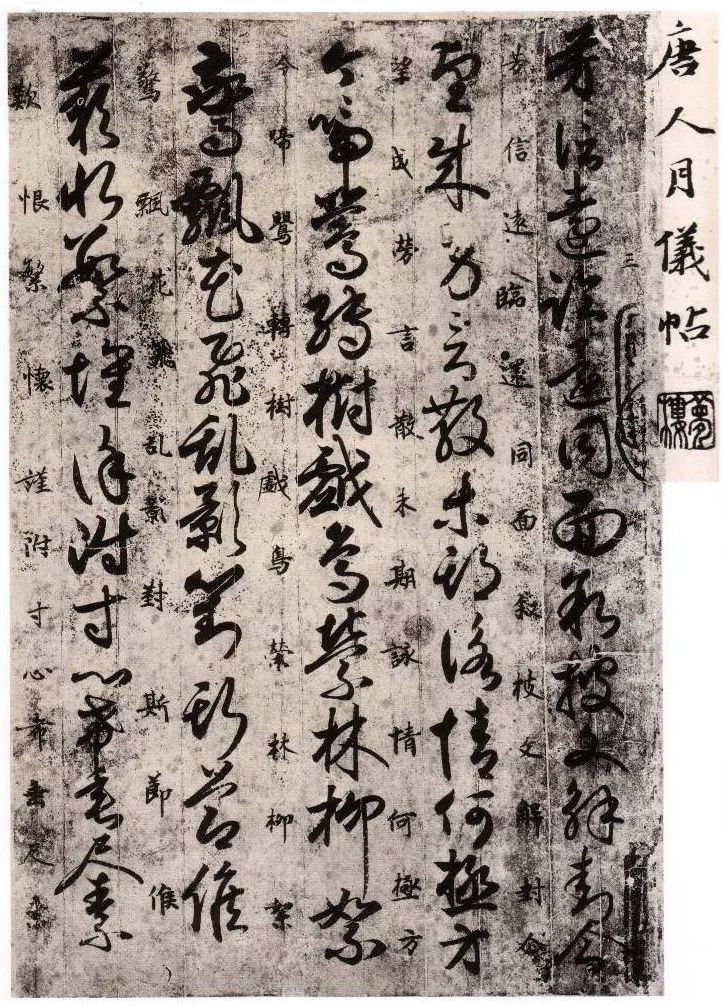
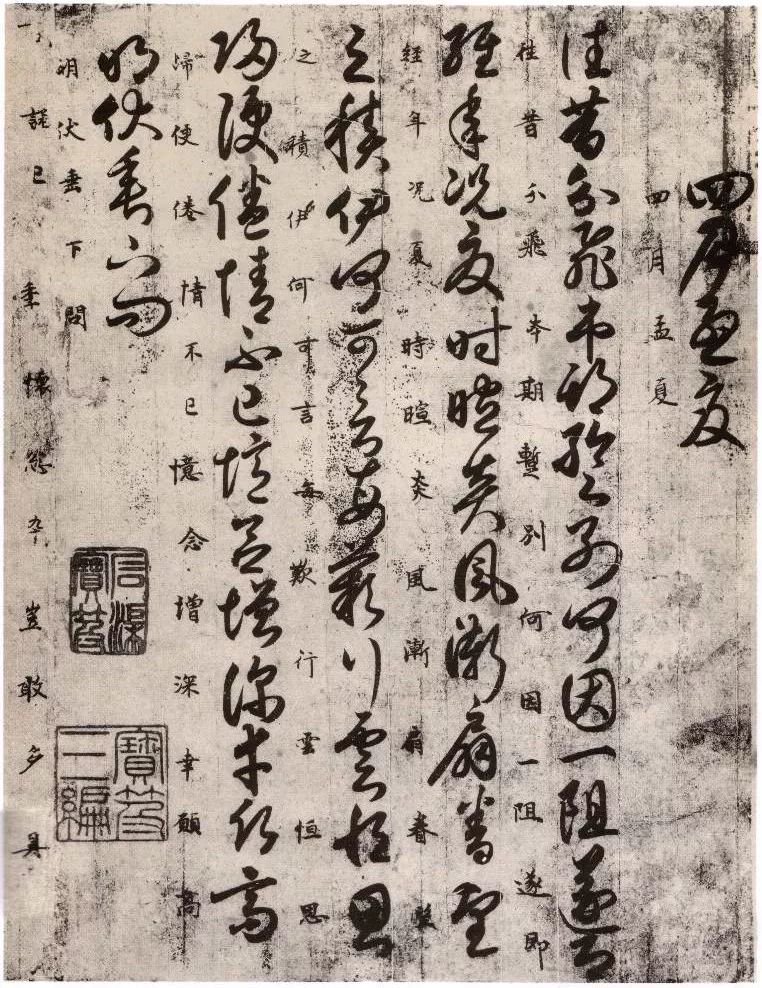
"Yueyi Tie of the Tang Dynasty" has a fast and smooth writing style, and the writing style is round, vigorous and sweet. The exegesis in small regular script is elegant and elegant, and the writing style is strong and vigorous. The calligraphy is flowing and beautiful, and the workmanship is extremely fine. It should be written by one person. The postscript written by King Wenzhi of the Qing Dynasty said: "Looking at the roundness and vigor of his writing style, he penetrated deeply into the houses of Jin Xian, and he is probably the same as Sun Qianli. The small characters in the explanatory text are changing rapidly, and there are no clues. It must not be done after the Song Dynasty, and it should be consistent with the cursive script. It comes from one person's hand." Today's people practice Cao, either by following the "Seventeen Posts" or by studying the "Shu Pu". Although it is a correct method, it is difficult for beginners to get started. The cursive writing of this post follows the rules, and the strokes are light and heavy, so it is clearly visible. Unlike the "Shu Pu", which is unpredictable and difficult to discern, it is also different from the "Seventeen Tie", which is an engraved Tie, making it difficult to guess the meaning of the writing. Learning cursive writing for the first time. Starting from this book, we can find out its rules and regulations.

